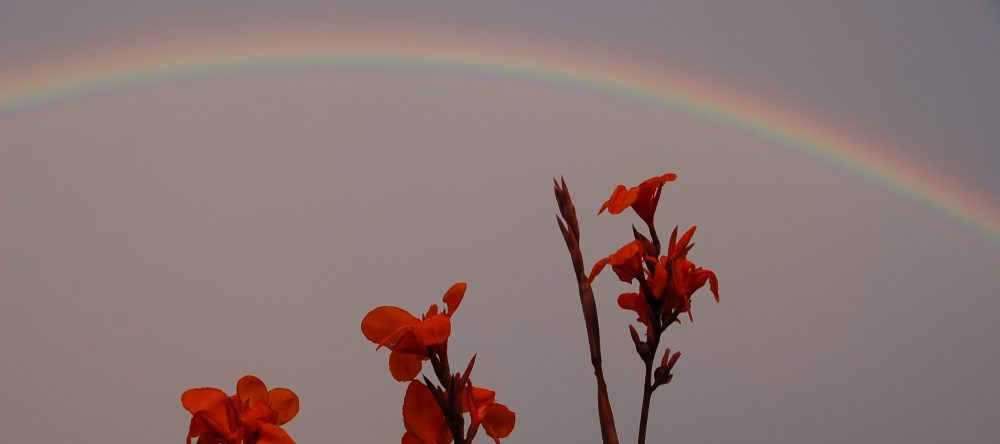The magic of planting a seed, seeing a tiny green shoot pushing out from the soil, and then watching it grow into an amazing plant – beautiful, fragrant, and sometimes edible, never fails to be a source of wonder.

These beauties are ‘Datura metaloides ‘Evening Fragrance’; a form of ‘Angels Trumpets’, grown from a packet of seed from Thompson and Morgan (the seedlings in the other pot are aubergines). I’m not clear whether Datura and Brugmansia are synonyms, or separate species – different sources give different answers. I once heard someone say that Brugmansia flowers hang down, whereas Datura flowers are held upright (as in the photo).

Seeds can also be very frustrating. I was very pleased that these germinated in just a few days (even though the packet said they might take between 21 and 60 days) but with other seeds I’ve sown, it’s been a different story. Most seed sowing involves annuals – both flowers and edibles, but there’s an increasing range of perennial seeds available.
With perennial plants typically retailing at around £6.00 for a very small plant, and more like £10.00 to £15.00 for a plant of a good size that will establish quickly, you can save yourself a lot of money by growing them from seed. And this is exactly what I’ve been doing, on and off, for the last few years, but with mixed success. These are one of the successes – echinacea purpurea…

Mind you, even these have been quite slow. Sown in the spring of last year, they barely reached any size, and went into the winter in small pots. I wasn’t confident they would come back this year. But of course, they did. I’ve potted them on this spring, and maybe I’ll get them in the ground later this year (if I can get the bed prepared first!)
I’ve had success in the past with Echinops, a large perennial with spiky-shaped leaves and lovely blue floral globes that are irresistible to bees…

But there have been plenty of failures, both from bought seed, and seed collected from plants in my own garden. I’ve never managed to get aconitum (one of my favourites) to germinate. This year I sowed scabious, oriental poppies, and anchusa. They sat on the greenhouse bench for two months without a peep – why they didn’t germinate, I don’t know. You follow the instructions on the packet, and nothing happens. Frustrated, I’ve resorted to my old heated propagator, even for seeds that are supposed to need a cooler environment. So far it’s worked for the anchusa, and for basil. Maybe it will work for some of the others too…
text & photos © graham wright 2021



 A dark-leaved sedum, sold as an unnamed variety, but which is probably ‘Xenox’).
A dark-leaved sedum, sold as an unnamed variety, but which is probably ‘Xenox’). A closer view, showing the intense colours of leaf and flower.
A closer view, showing the intense colours of leaf and flower. It’s come round to the time of year when the lawn mower morphs from a tool for cutting grass, into a vacuum cleaner for fallen leaves.
It’s come round to the time of year when the lawn mower morphs from a tool for cutting grass, into a vacuum cleaner for fallen leaves.
 Aster novi-belgii ‘Climax’ – again, see note (1)
Aster novi-belgii ‘Climax’ – again, see note (1) Canna Neubert, taken only a few days ago – who said the summer was over
Canna Neubert, taken only a few days ago – who said the summer was over





